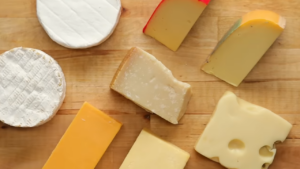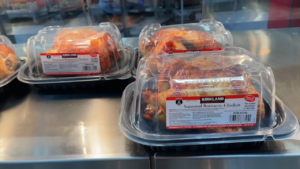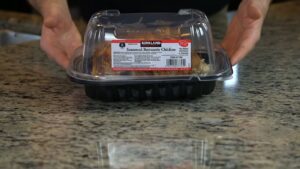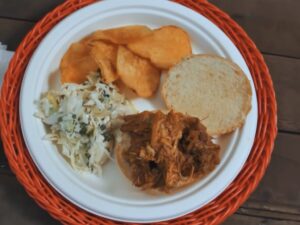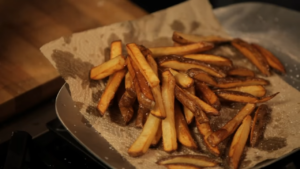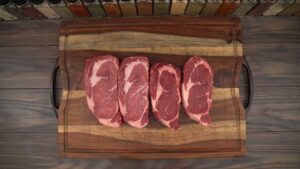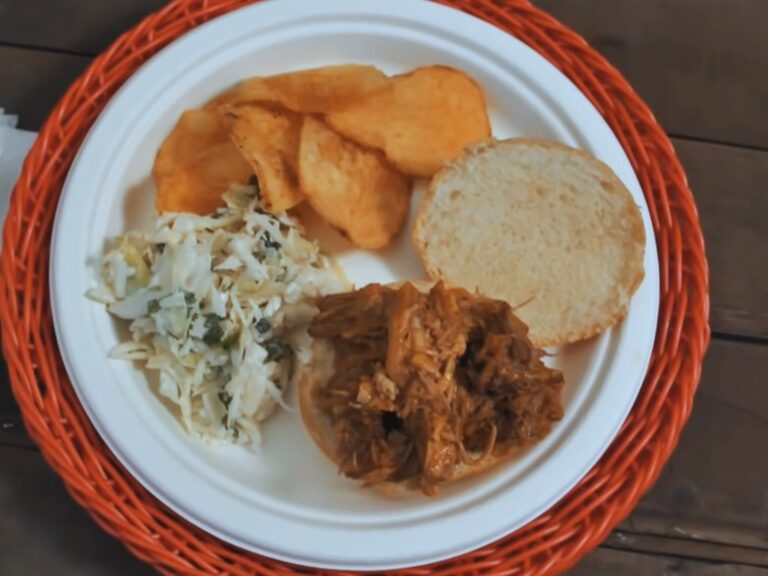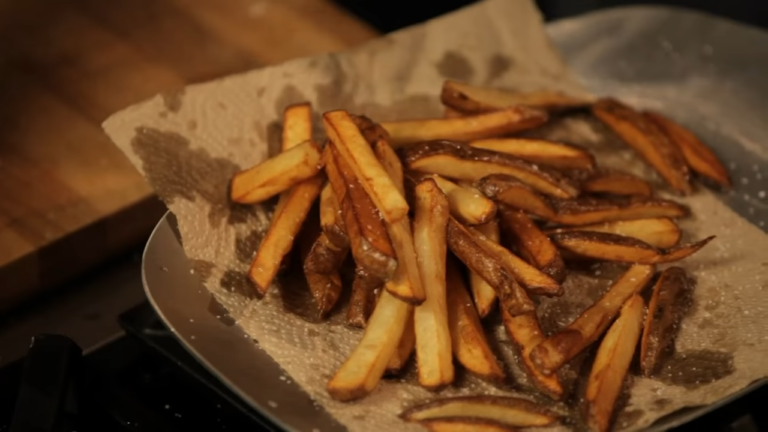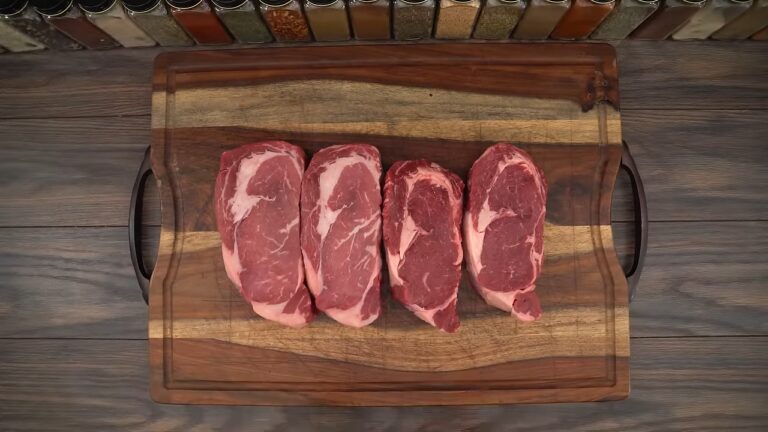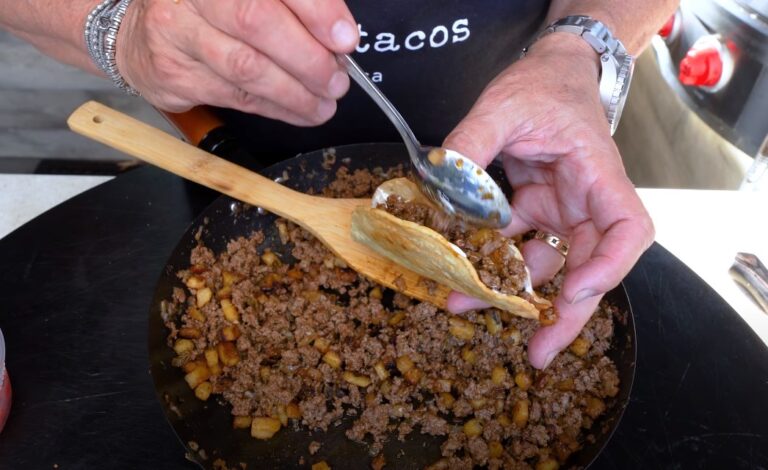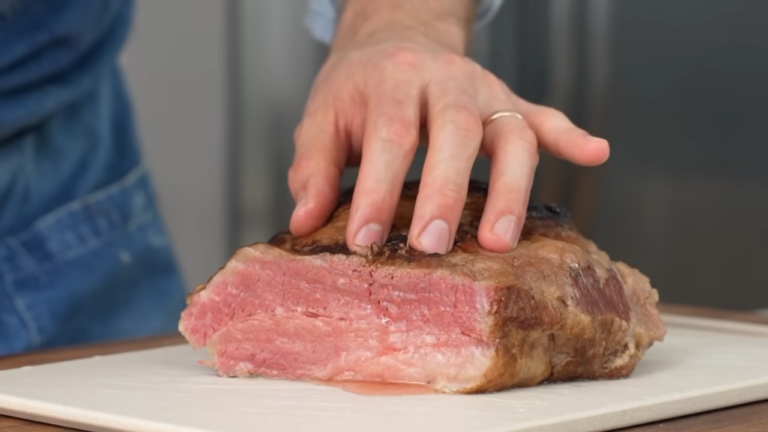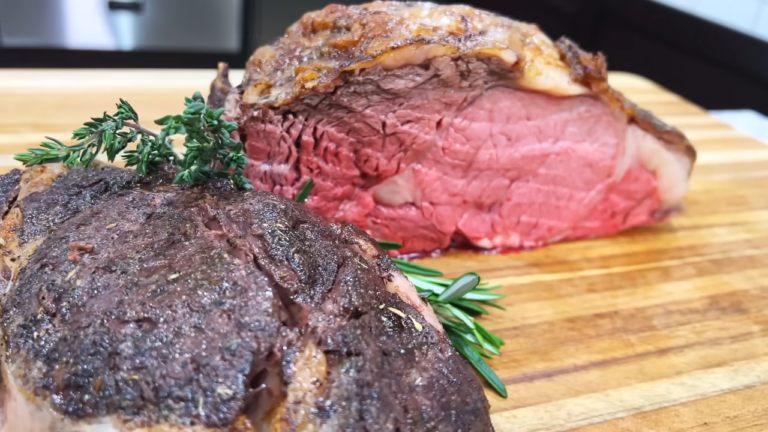You know how some cuts of meat are supposed to be all fancy and special? Well, the pork shoulder is one of those. People like to go on and on about how “succulent” and “richly flavored” it is. Which basically means it’s juicy and tastes good.
Now, when you’re cooking this pork shoulder, which way you put the fat side ain’t just some random choice. In fact, it dramatically alters the outcome of your dish. The fat’s position is supposed to change how moist and flavored your food turns out.
In this post, I will explain how this works, so without further ado, let’s begin.
Cooking with Fat Side Up

Leaving the fat on top works wonders. That fat doesn’t just sit there looking pretty, it slowly melts down over the whole piece of meat. By the time it’s done, that pork is swimmin’ in its own juices.
The Trio of Benefits
- Continuous Moisture: As the fat melts, it acts like a self-baster, continuously bathing the pork in its own juices. This ensures that every slice is succulent and full of flavor.
- Guard Against Harsh Heat: The layer of fat serves as a protective barrier, shielding the delicate meat from the direct, intense heat of the oven or grill. This gentle cooking process allows the pork to cook evenly, retaining its natural tenderness.
- Variety In Tastes: This method is renowned for yielding a pork shoulder that is not just tender but also packed with a richer, more robust flavor profile. The slow melting of the fat infuses the meat with an irresistible aroma and taste.
Optimal Cooking Techniques and Temperatures
- Low and Slow: Embrace the low and slow approach, cooking the pork shoulder at a gentle 225-275°F. This slow-cooking method ensures that the meat is evenly cooked, tender, and full of flavor.
- Roasting or Smoking: These methods are particularly effective for fat-side-up cooking. Roasting in an oven or slow-smoking infuses the meat with a depth of flavor that is hard to replicate with any other cooking method.
Challenges You Should Keep in Mind
- Uneven Crisping: One downside is that the bottom part of the fat may not crisp up as evenly as the top.
- Watchful Eye Required: There’s a risk that the top layer of fat can render away too quickly if not monitored, potentially leaving the meat less protected and prone to drying out.
Cooking with Fat Side Down
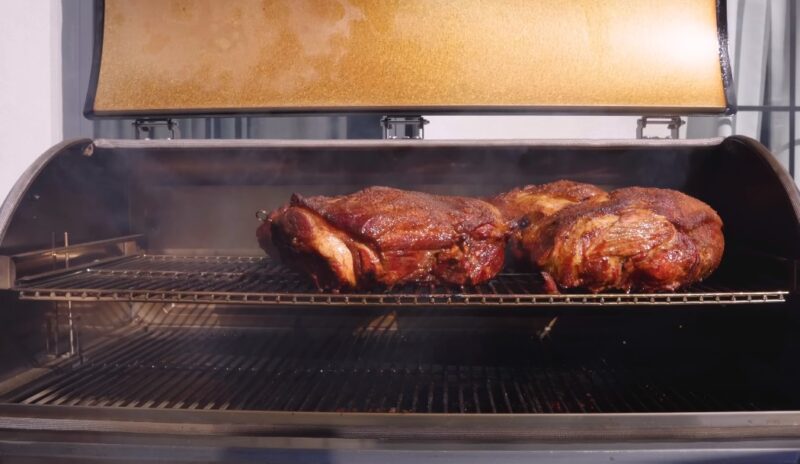
For this method, you wanna lay that fatty pork down with the fat side on the bottom. Cook it like that, and the fat is gonna get mighty crispy while the rest roasts up tender. Cooking it fat down means that fat comes right up against the heat.
This gives you a really nice crunchy fat layer on top. I love this method for how that fatty part turns out. Trust me, your whole family is gonna want seconds when they taste how good it comes out doing it this way. Give it a try next time you fire up the grill.
The Benefits Unveiled
- Direct Heat for a Crispy Finish: The direct exposure to heat crisps the fat cap, adding a delightful texture contrast to the tender meat.
- Flavor Intensification: The direct heat not only crisps the fat but also potentially enhances the overall flavor development of the meat.
- Uniform Cooking: This method can lead to more evenly cooked meat, with a balanced distribution of flavors throughout.
Perfecting the Method
- Moderate Heat Mastery: A slightly higher temperature range, around 250-300°F, is often more suitable for this method.
- Grilling and Barbecuing: These cooking methods can greatly benefit from the fat side-down approach, especially for achieving a crispier exterior.
Potential Drawbacks
- Risk of Dryness: Without the self-basting effect, there’s a higher risk of the meat drying out, requiring careful monitoring.
- Flavor Trade-Offs: The fat may not infuse its flavors into the meat as effectively as the fat side-up method, potentially leading to a less flavorful fat cap.
Comparison
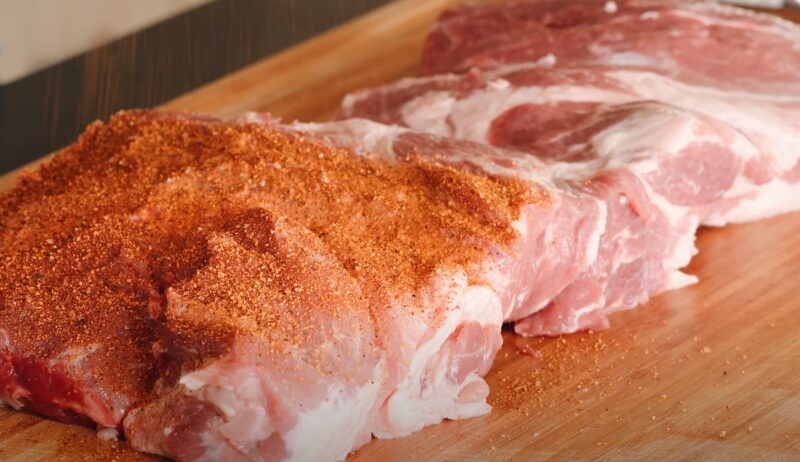
When it comes to the flavor profile of pork shoulder, the orientation of the fat plays a pivotal role.
- Fat Side Up: With this method, the fat gently melts into the meat, resulting in a rich, deeply infused flavor that is both subtle and profound.
- Fat Side Down: In contrast, the fat side-down approach brings a robust, grilled flavor profile to the forefront. The direct heat interaction creates a taste that is more pronounced, with a smoky nuance that speaks of open flames and the great outdoors.
Texture Variations
The texture of pork shoulder can vary significantly based on the fat orientation during cooking.
- Fat Side Up: This method tends to yield a texture that is tender to the point of being almost buttery. The meat remains moist, absorbing the essence of the fat as it cooks, resulting in a succulence that is both palpable and delightful.
- Fat Side Down: Here, the exterior of the pork shoulder develops a crispier layer, offering a delightful contrast to the tender meat within. This method gives a different mouthfeel, where each bite combines the crunch of the crisped fat with the softness of the meat.
Impact on Overall Cooking Time and Efficiency
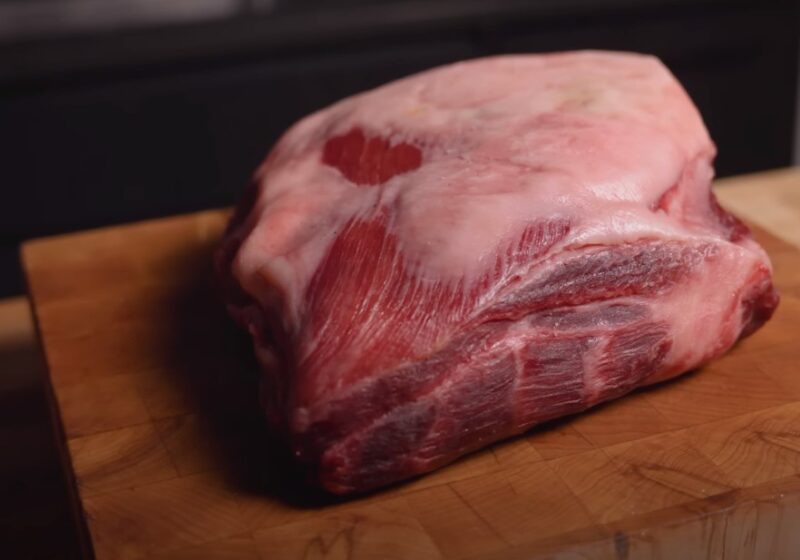
The cooking time and efficiency of preparing pulled pork and pork shoulder are also influenced by the fat orientation.
- Fat Side Up: This method often requires a longer cooking time, primarily due to the lower temperatures involved in the process. You need to be patient and allow the flavors and textures to develop slowly and fully.
- Fat Side Down: Generally, this approach can be quicker, but it demands more vigilance. The risk of drying out the meat is higher, necessitating a careful eye to maintain the perfect balance of heat and time.
Suitability for Different Cooking Methods
Different cooking methods can favor one orientation over the other.
- Smoking: This method generally favors fat side up, as the slow cooking process benefits from the moisture retention provided by the fat.
- Roasting: Roasting can be successful with either orientation, depending on the desired outcome in terms of flavor and texture.
- Grilling: For a crispier texture, especially on the exterior, grilling often works better with the fat side down.
Summary
When you’re cooking up a pork shoulder, which way you put that fat layer on top makes all the difference. See, if you put it fat side up, that sucker’s gonna baste itself in its own juices. Guaranteed to keep that meat juicy and tasting great.
But if you flip it over with the fat down, now you got yourself a crispy crust on the outside. Plus, all that fat just melts right into the meat below. Gives it tons of flavor.
Essentially, one way you get moist and tender, the other way gets you crispy and tasty. It’s your call which style you like more.
Hi, I’m George Stewart. I’m 47 years old and a father of two who loves BBQ and French cuisine. On this blog, I share my cooking experiences and favorite recipes. Whether you’re into grilling or gourmet dining, I hope you find something here that inspires your next meal. Welcome and enjoy!



